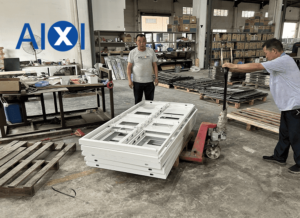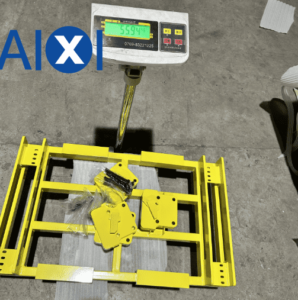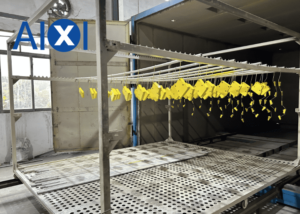Commonly used sheet metal materials
1. Cold rolled sheet, SPCC. The most basic sheet metal material is widely used. It is used as the base material of other materials and is relatively easy to rust.
2. Electrogalvanized sheet, SECC, is widely used, and it is obtained by electroplating with cold plate as the base material, which is the result of chemical reaction.
3. Hot-dip galvanized sheet, SGCC, has a wide range of uses. It is the product of using a cold plate as the base material and heating it in a molten zinc solution to form a zinc layer. The production process is a physical change process.
4. Hot-rolled sheet, SPHC, is a low-end material that is easy to rust, and its thickness is generally more than 3mm. Usually used to make hinge products.
5. SD steel plate is a plate with excellent anti-rust and anti-corrosion properties. The mounting bracket of the outdoor unit of the air conditioner is made of this material.
6. Stainless steel and stainless iron, typically SUS304 and SUS430, are alloy materials. Anti-rust and anti-corrosion performance is good, the surface is more beautiful. It is usually used for appearance parts, such as the door shell of the refrigerator and the cooktop of the gas stove.
7. Galvalume-galvanized sheet seems to be a kind of electro-galvanized sheet, but it has a metal aluminum element more than electro-galvanized sheet, so the surface is relatively smooth and beautiful. It is often used as appearance parts, such as the back steel plate of a certain type of refrigerator.
8. Aluminum plate or aluminum alloy plate can also be called aluminum sheet. Low density and anti-corrosion, typical products: refrigerator water tray and evaporator fins, etc.
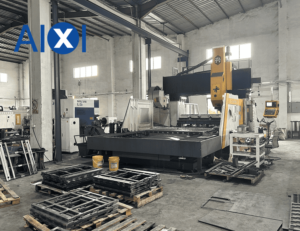
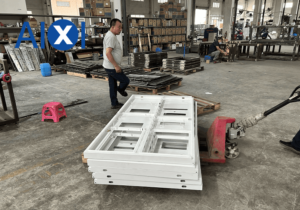
The price of sheet metal materials
price comparison:
In the case of the same thickness:
Hot-rolled sheet<cold-rolled sheet<hot galvanized sheet<electric galvanized sheet<SD steel sheet<stainless iron<stainless steel
The same material generally belongs to the situation that the greater the thickness, the lower the price.
In the cost of sheet metal parts, material cost basically accounts for 60-70%, sometimes higher.
Therefore, it is necessary to design a reasonable structure and improve the utilization rate of materials. If the utilization rate of materials is low, the price of the product may be lower than the price of scrap.
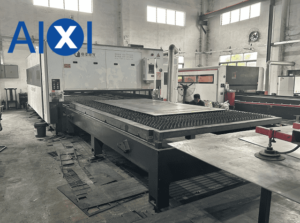
Commonly used surface treatment processes for steel plates
1. Electro-galvanizing: It is the process of forming a uniform, dense and well-bonded metal or alloy deposition layer on the surface of the workpiece by electrolysis.
Compared with other metals, zinc is a relatively cheap and easy-to-plate metal, and it is a low-value anti-corrosion electroplating layer. It is widely used to protect steel parts, especially against atmospheric corrosion, and for decoration. Plating techniques include tank plating (or rack plating), barrel plating (suitable for small parts), automatic plating and continuous plating (suitable for wire and strip).
According to the classification of electroplating solution in China, it can be divided into four categories:
Cyanide Galvanized
Because (CN) is highly toxic, environmental protection has put forward strict restrictions on the use of cyanide in electro-galvanizing, continuously promoting the development of electro-galvanizing bath systems that reduce cyanide and replace cyanide, and require the use of low-cyanide (micro-cyanide) electroplating baths . After electroplating with this process, the product quality is good, especially the color plating, and the color remains good after passivation.
zincate galvanizing
This process is evolved from cyanide galvanizing. At present, there are two major factions in China, namely: a) the «DPE» series of Wuhan Material Protection Institute; b) the «DE» series of Radio and Television Institute. Both belong to zincate galvanizing with alkaline additives; PH value is 12.5~13. With this process, the lattice structure of the coating is columnar, which has good corrosion resistance and is suitable for color galvanizing.
Chloride galvanized
This process is widely used in the electroplating industry, accounting for up to 40%. After passivation (blue and white) can replace chrome with zinc (comparable to chrome plating), especially after adding water-soluble varnish, it is difficult for laymen to identify whether it is galvanized or chrome-plated. This process is suitable for white passivation (blue white, silver white).
sulfate galvanizing
This process is suitable for continuous plating (wire, strip, simple, thick and large parts, components). low cost.
The electro-galvanized industry is a polluting industry. Although it is widely used and low in cost, electro-galvanized products do not meet ROHS standards, so try not to use electro-galvanized products in product design.
2. Chrome plating
The process principle is the same as that of galvanizing.
Compared with traditional electro-galvanizing: chrome coating has extremely strong corrosion resistance, which is 7-10 times that of galvanizing, and the surface is beautiful, but the cost is higher.
At present, the most advanced chrome plating process is called DACROMET, which is a revolutionary high-tech metal surface treatment process without pollution in the whole process.
3. Powder spraying: the powder is polarized, and under the action of the electric field force, it evenly adheres to the surface of the product with the opposite polarity. are physical changes.
Powder spraying process principle:
Electrostatic powder spraying: It is mainly to polarize the paint (powder) through electrodes, and then charge the object to be sprayed with the opposite charge, and the powder will evenly adhere to the surface of the object under the action of the electric field force.
Features of powder spraying process:
Powder electrostatic spraying will not cause air pollution. The powder can be recycled to reduce the consumption cost of materials. The coating performance is superior in acid resistance, alkali resistance, salt resistance, corrosion resistance and high adhesion.
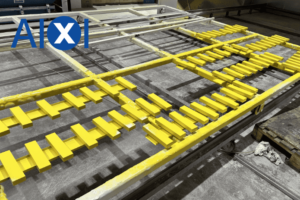
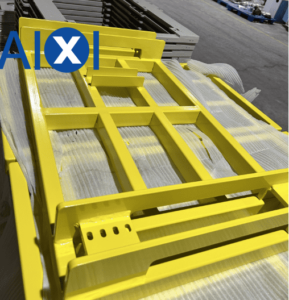
4. Electrophoresis: Electrophoretic paint is under the action of the positive and negative poles, and the charged paint ions move to the surface of the product and deposit to form a coating. is a chemical change.
The process principle of electrophoresis:
The electrophoretic coating is applied to the positive and negative poles. Under the action of voltage, the charged coating ions move to the cathode, and form insoluble matter with the alkalinity generated on the surface of the cathode, and deposit on the surface of the workpiece.
Features of electrophoretic surface treatment process:
The electrophoretic paint film has the advantages of full, uniform, smooth and smooth coating. The hardness, adhesion, corrosion resistance, impact performance and permeability of the electrophoretic paint film are obviously superior to other coating processes.
The common electrophoretic color is mostly black, and other colors are also available.
5. Dipping: The product is heated in the molten material, and the heated metal combines with the surrounding molten material to form a certain thickness of surface material. are physical changes.
The process principle of dipping:
Metal dipping is a new technical treatment process for metal surface anticorrosion, dipping is a heating process, metal preheating, dipping, and curing. During immersion, the heated metal sticks to the surrounding material, the hotter the metal, the longer the immersion time and the thicker the material.
Process characteristics of dipping:
Wide range of applications: rich colors, good protection, excellent cold resistance and heat preservation, and acid and alkali resistance.
The purpose of sheet metal surface treatment
Since some sheet metal materials do not have anti-rust and anti-corrosion capabilities, they must be surface treated to achieve the purpose.
There are two main categories of surface preparation purposes:
1. Improve the service life of the product in harsh environments.
Refers to: anti-rust and anti-corrosion capabilities.
2. To obtain the desired surface effect or function.
Refers to: meet the appearance requirements of the product.

 English
English Deutsch
Deutsch Français
Français 日本語
日本語
